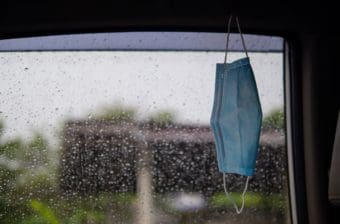On March 22, 2022, The Hamilton Project at the Brookings Institution hosted a webcast entitled “Tracking the Recovery From the COVID-19 Recession” that took stock of the state of the economy, the state of public health, and the relationship between the two.
The webcast included introductions from Hamilton Project director Wendy Edelberg and a fireside chat between Mary C. Daly, president and CEO of the Federal Reserve Bank of San Francisco, and Peter Orszag, CEO of financial advisory at Lazard Freres & Co. LLC, former director of the Office of Management and Budget under President Obama, and the first director of The Hamilton Project.
In her introductory remarks, Edelberg announced the release of a Hamilton Project economic analysis entitled “Bolstered Balance Sheets: Assessing Household Finances since 2019,” which examines how household balance sheets have evolved since the onset of the COVID-19 pandemic.
The analysis finds that “despite the many hardships families have endured, household finances at the start of 2022 are in a better financial position than in 2019,” said Edelberg. She attributed these improvements to robust federal benefits, advancements in labor-market income, increases in asset prices, and reductions in consumer spending that boosted savings.
In her presentation of the research, Edelberg highlighted one of the major findings of the analysis: The real wealth of U.S. households has increased by more than $24 trillion dollars over the course of the pandemic. This increase was driven primarily by rising stock market prices and rising home prices.
Edelberg then turned the conversation over to Orszag to moderate a fireside chat with President Daly on how the COVID-19 pandemic continues to affect the economy.
The conversation began with Orszag and Daly providing framing remarks on the current state of the U.S. economy. Both Orszag and Daly noted that the war in Ukraine and the ongoing pandemic will continue to impact Americans financially and place significant risks and pressures on inflation, supply chain demands, and commodity prices going forward.
Orszag continued the discussion on inflation by asking Daly how much the rise in inflation is due to fiscal policy and how much is due to the pandemic. “In the end, it’s less about scoring how much was fiscal and how much was pandemic, because ultimately the lion’s share of fiscal impact creating some of the pressure on inflation was related to the pandemic,” Daly replied.
“Inflation has persisted for long enough that people are starting to wonder how long it will persist,” Daly said. She suggested marching rates up to the neutral level or to an even higher level that could help ensure inflation comes back down.
The conversation then turned to the topic of labor markets, with Orszag noting the 11 million job openings in the U.S. and asking for Daly’s opinion about the state of the American job market. “If you’re in labor, you’re saying, well, what’s wrong with this job market? This is pretty good … This is the first time we’ve seen rapid wage growth in our area. It’s the first time we have a pick of jobs. And so, why is this not a good outcome?” Daly said. “And my answer is because it’s ultimately hard to sustain.”
As the discussion between Orszag and Daly shifted to localized labor markets and women’s participation in the labor market, Daly stated that her “hope is that we’ll find ways that increase the labor supply in the future by not making people fit a mold and allowing people to create a mold that works for them.”
When asked what she believed to be the most important economic lesson learned in the response to the pandemic, Daly answered, “I am glad we chose to do what we thought was going to be necessary to get as many people as possible over [the pandemic]. If history judges that the bridge was a little bit too long, to me, that’s a livable mistake to have made.”



